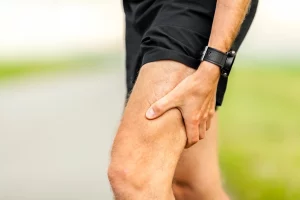In yet another interesting video, David Fitzgerald from Dublin Physio talks about exercise and core strength. If you watched last week’s video about Muscle Activation, then you will know that David is invested in spreading information surrounding the best types of exercise for different people.
Watch the video below to hear more of what he has to say on the topic and, if you want to read a summary of his vlog, keep reading this article.
As always, David gives a very detailed explanation of the topic discussed in the video so watch the video below if you’re particularly keen on listening to his expert opinion and want to know more of what he has to say. If, on the other hand, you would like a summary of the main points discussed in his video, you will find this article extremely helpful!
What is core strength and why is it important?
Core strength is a topic discussed very frequently, often incorrectly. Most people, in fact, only refer to abdominal muscles when talking about it although core strength also includes the muscles in the lower spine, the musculature around the buttocks and on the back sides of the hips. The latter is, in fact, essential for the muscles around the buttocks and abdominal area as they make them function correctly.
Of course, different exercises put different pressure on the muscles, therefore working on your core strength in different reasons. As David says, however, most of the exercises we do (such as planks or crunches) focus on one direction only. This, obviously, doesn’t reflect on our day-to-day movements, when we exercise our muscles in all different directions. This is the main reason why it is important to focus on core strength in the right way; in order to allow our muscles to comfortably do all the movements, we need to do on a daily basis, whether this is bending backward or twisting our bust.
This is one of the main reasons why practitioners always prescribe core strengthening exercises, to help their patients to be able to complete all their daily activities without requiring too much effort.
What are the most common core strengthening exercises?
From an exercise selection point of view, there are many things to keep in mind; working in safe positions is a safe start but very often people decide to skip to a higher level exercise too abruptly. This lack of a smooth transition is a crucial mistake, which can often cause problems when it comes to doing movements we should do with ease.
Bending and twisting are positions that challenge the mechanics of the spine and, if there are problems with muscle control in that direction, then that’s when rehabilitation is needed to try and directly improve the core strength in that area.
There are many different types of exercises suitable for this type of problem and David gives us a list of the few most effective ones. The physiotherapist might decide, for instance, to break the movement down into static parts; putting the patient in a specific position and applying resistance in that position. Resistance bands follow similar principles however sometimes it is also the case that the clinician decides to hold the patient in a certain position and then progressing through a range of exercises.
Patients who are reasonably active can, however, suffer from limited movement sometimes and, when that is the case, it is necessary to target these specific movements and muscles from a rehabilitation point of view.
The main message David wants all his viewers to understand is that referring to “core” isn’t the same as referring to the abdomen section. Core indicates the front and back of an individual and, more specifically, the back of the buttocks’ area and the side of the hips. These are all intricate parts of the core musculature that need to work together in order for us to function correctly.
So, that is all for today’s video about Core strength; make sure to keep an eye out for next week’s vlog by practitioner David Fitzgerald if you’re interested to hear more of what he has to say about all things health, exercise, and physiotherapy!





